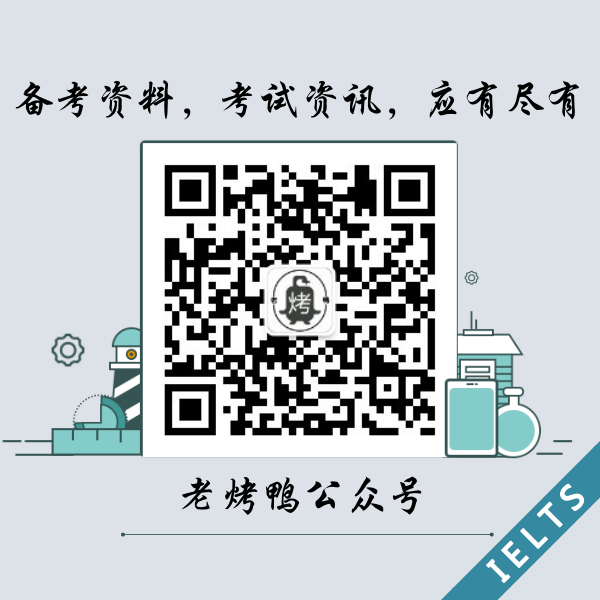剑桥雅思10Test3阅读Passage2原文翻译 Autumn leaves 秋叶变红
剑桥雅思10阅读第三套题目第二篇文章的主题为秋叶变红的原理。文章一共9段,大体可以分为三部分:介绍秋天树叶变色的现象,目前的理论解释及其缺陷,以及“光屏障”假说。下面是具体每一段的翻译。
点击查看这篇雅思阅读中需要大家掌握的重点词汇以及对应的答案解析:
雅思真题阅读词汇 剑桥雅思10 test 3 passage 2 秋天树叶变红的研究autumn leaves
剑桥雅思10Test3阅读Passage2答案解析 Autumn leaves 秋叶变红
剑桥雅思10 Test3 Passage2阅读原文翻译
A部分
One of the most captivating natural events of the year in many areas throughout North America is the turning of the leaves in the fall. The colours are magnificent, but the question of exactly why some trees turn yellow or orange, and others red or purple, is something which has long puzzled scientists.
在北美许多地区,一年之中最引人注目的自然现象之一就是秋天里树叶的变化。其颜色绚丽夺目。但究竟为什么一些树木变成黄色或橙色,而其他却变成红色或紫色?这一问题长期以来都困扰着科学家。
B部分
Summer leaves are green because they are full of chlorophyll, the molecule that captures sunlight and converts that energy into new building materials for the tree. As fall approaches in the northern hemisphere, the amount of solar energy available declines considerably. For many trees — evergreen conifers being an exception -the best strategy is to abandon photosynthesis* until the spring. So rather than maintaining the now redundant leaves throughout the winter, the tree saves its precious resources and discards them. But before letting its leaves go, the tree dismantles their chlorophyll molecules and ships their valuable nitrogen back into the twigs. As chlorophyll is depleted, other colours that have been dominated by it throughout the summer begin to be revealed. This unmasking explains the autumn colours of yellow and orange, but not the brilliant reds and purples of trees such as the maple or sumac.
夏天的叶子是绿色的,因为它们充满了叶绿素。叶绿素文章来自老烤鸭雅思是一种捕获阳光并将该能量转化为新的树木增长材料的分子。随着北半球秋天的到来,可利用的太阳能数量大大减少。对于许多树木来说- 常绿针叶树除外-最佳策略是放弃光合作用直到春天来临。因此,与其保留冬季里十分多余的叶子,树木选择节省其宝贵的资源而抛弃它们。但在弃置这些叶子之前,树木会分解其中的叶绿素分子,并将里面含有的宝贵的氮元素运回枝干。随着叶绿素的枯竭,夏季里被它主导的颜色开始显现出来。这一显露过程解释了秋天里出现的黄色和橙色,但却无法解释诸如枫树或漆树之类的树木所呈现的艳丽的红色和紫色。
C部分
The source of the red is widely known: it is created by anthocyanins, water-soluble plant pigments reflecting the red to blue range of the visible spectrum. They belong to a class of sugar-based chemical compounds also known as flavonoids. What’s puzzling is that anthocyanins are actually newly minted, made in the leaves at the same time as the tree is preparing to drop them. But it is hard to make sense of the manufacture of anthocyanins—why should a tree bother making new chemicals in its leaves when it’s already scrambling to withdraw and preserve the ones already there?
红色的来源广为人知:它是由花青素(一种可反射可见光谱中红色到蓝色范围的水溶性植物色素)产生的。它们属于一类糖基化合物,也被称为类黄酮。令人费解的是,花青素实际上是新合成的,是在树木准备将树叶丢弃的同时在里面产生的。但是,很难理解合成花青素的意义-为什么树木在急于收回并保存原本存在于树叶中的化学物质时,还要在里面再制造出新的来呢?
D部分
Some theories about anthocyanins have argued that they might act as a chemical defence against attacks by insects or fungi, or that they might attract fruit-eating birds or increase a leaf’s tolerance to freezing. However there are problems with each of these theories, including the fact that leaves are red for such a relatively short period that the expense of energy needed to manufacture the anthocyanins would outweigh any anti-fungal or anti-herbivore activity achieved.
一些有关花青素的理论认为,它们可能是作为抵御昆虫或真菌攻击的化学防御,或者说,它们可能会吸引以果实维生的鸟类或者提升树叶对寒冷的耐受性。但是,这些理论都存在问题,例如树叶变红的时间如此之短,以至于制造花青素所需要耗费的能量会超过任何抗真菌或防食草动物行为所取得的收益。
E部分
It has also been proposed that trees may produce vivid red colours to convince herbivorous insects that they are healthy and robust and would be easily able to mount chemical defences against infestation. If insects paid attention to such advertisements, they might be prompted to lay their eggs on a duller, and presumably less resistant host. The flaw in this theory lies in the lack of proof to support it. No one has as yet ascertained whether more robust trees sport the brightest leaves, or whether insects make choices according to colour intensity.
还有一种理论认为,树木产生鲜艳的红色是为了让那些食草昆虫相信,它们十分健康强壮,能够轻松的发起抵御侵扰的化学防御。如果昆虫会注意到这些现象,它们可能会将卵产在颜色更为暗淡,不太可能进行抵抗的宿主上。这一理论的缺陷在于缺乏证据支持。尚无人能够确定,更健壮的树木是否会产生最鲜艳的叶子,又或者昆虫是否根据颜色强度来进行选择。
F部分
Perhaps the most plausible suggestion as to why leaves would go to the trouble of making anthocyanins when they’re busy packing up for the winter is the theory known as the ‘light screen’ hypothesis. It sounds paradoxical, because the idea behind this hypothesis is that the red pigment is made in autumn leaves to protect chlorophyll, the light-absorbing chemical, from too much light. Why does chlorophyll need protection when it is the natural world’s supreme light absorber? Why protect chlorophyll at a time when the tree is breaking it down to salvage as much of it as possible?
树叶为什么会在忙于为冬季做准备的时候还不嫌麻烦的生产叶绿素。这一现象最合理的解释是一种被称为“光屏障”的假说。它听起来有些自相矛盾。因为这种假说背后的想法是,秋天里树叶产生的红色素是为了防止叶绿素这种吸光物质吸收太多的阳光。为什么叶绿素作为自然界的吸光能手还需要保护呢?为什么要在树木分解叶绿素以拯救尽可能多的营养物质时去保护它呢?
G部分
Chlorophyll, although exquisitely evolved to capture the energy of sunlight, can sometimes be overwhelmed by it, especially in situations of drought, low temperatures, or nutrient deficiency. Moreover, the problem of oversensitivity to light is even more acute in the fall, when the leaf is busy preparing for winter by dismantling its internal machinery. The energy absorbed by the chlorophyll molecules of the unstable autumn leaf is not immediately channeled into useful products and processes, as it would be in an intact summer leaf. The weakened fall leaf then becomes vulnerable to the highly destructive effects of the oxygen created by the excited chlorophyll molecules.
虽然叶绿素经过精巧的演变来捕捉太阳光中的能量,但它有时也会被过多的阳光所伤害,尤其是在干旱、低温、或者营养缺乏的时候。此外,秋天里,当树叶正忙于拆解其内部结构为冬天做准备的时候,对阳光过度敏感的问题会更加严重。不稳定的秋叶中,叶绿素分子所吸收的能量并不会被立刻输送到有用的产品或过程中,就像夏天里完好无损的叶子里所发生的那样。这时候,衰弱的落叶十分容易受到活跃的叶绿素分子所产生的氧气的破坏。
H部分
Even if you had never suspected that this is what was going on when leaves turn red, there are clues out there. One is straightforward: on many trees, the leaves that are the reddest are those on the side of the tree which gets most sun. Not only that, but the red is brighter on the upper side of the leaf. It has also been recognised for decades that the best conditions for intense red colours are dry, sunny days and cool nights, conditions that nicely match those that make leaves susceptible to excess light. And finally, trees such as maples usually get much redder the more north you travel in the northern hemisphere. It’s colder there, they’re more stressed, their chlorophyll is more sensitive and it needs more sunblock.
即使你从未怀疑过这就是树叶变红时所发生的事情,也仍然存在许多提示线索。最简单明了的一条是:在许多树木上,最红的叶子出现在光照最多的那一侧。不仅如此,叶子上部的红色会更加鲜亮。几十年来,如下事实都广为人知,产生鲜艳红色的最佳条件为干燥、阳光充足的白天和寒冷的夜晚。这些条件恰好与那些使叶子容易遭受过度阳光损害的条件相匹配。最后,在北半球越往北去,枫树之类的树木就会变得越红。那里更加寒冷,它们要承受更多的压力,它们的叶绿素更加敏感,需要更多的光屏障。
I部分
What is still not fully understood, however, is why some trees resort to producing red pigments while others don’t bother, and simply reveal their orange or yellow hues. Do these trees have other means at their disposal to prevent overexposure to light in autumn? Their story, though not as spectacular to the eye, will surely turn out to be as subtle and as complex.
然而,至今仍未被完全理解的是,为什么一些树木会选择产生红色素,而其他的则嫌麻烦,只是显露出其橙色或者黄色而已。难道这些树木在抛弃叶子的时候拥有其他手段来防止过度暴露于秋天的阳光之下吗?它们的故事虽然不那么引人注目,但肯定也同样微妙和复杂。
剑桥雅思10Test3阅读Passage1原文翻译 The Context, Meaning and Scope of Tourism 旅游业






剑桥雅思10Test3阅读Passage2原文翻译 Autumn leaves:等您坐沙发呢!